Unsure about your French table manners? Click Here to download > > How to avoid these 10 food etiquette mistakes !
- Home ›
- Destinations ›
- Southern France ›
- Getting Around Marseille
How To Get Around Marseille As A Tourist
Published 27 February 2024 by Leyla Alyanak — Parisian by birth, Lyonnaise by adoption, historian by passion
Getting around Marseille can be a challenge. It is France’s second-largest city by population, and larger than Paris in area. Yet its public transportation is one-tenth that of the capital’s. I spent a week in the city recently and uncovered the best ways to get around Marseille without hassle.
Being a port city, Marseille has a wild combination of public transport that includes everything from a ferry to a subway. The good news is that it’s not difficult to figure out. The bad news is that it’s unreliable.
Here are the standard transport options in Marseille: subway, tram, bus, taxi, Uber and Bolt, car, bicycle, scooter, boat, ferry, and on foot. We’ll look at each of these in turn.
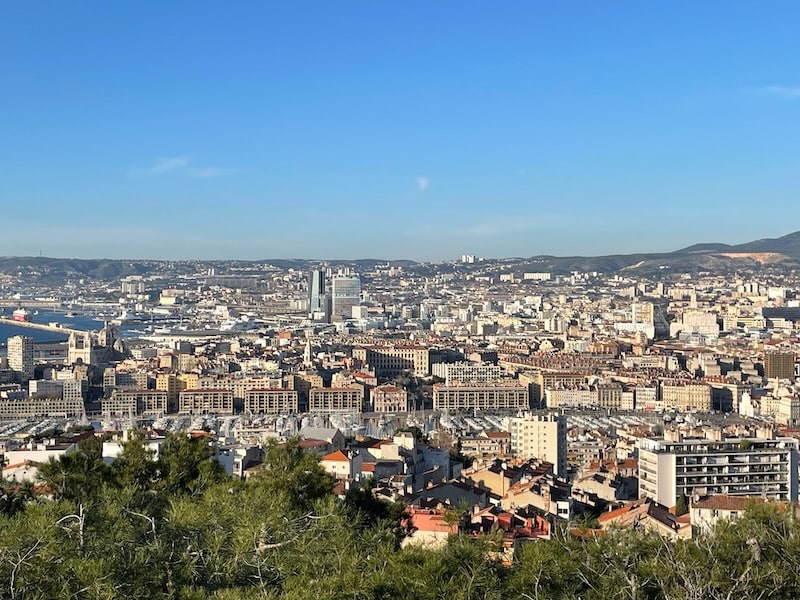 A beautiful view of Marseille seen from above
A beautiful view of Marseille seen from aboveNOTE: Pages on this site may contain affiliate links, which support this site. See full Privacy Policy here.
Arriving in Marseille
There are two main ways of arriving in Marseille.
By train
Marseille has direct trains from a number of French cities. You’ll arrive at Marseille Saint-Charles train station, which is in town and within two metro stops of the Vieux Port area. The metro station is in the basement of the railway station - just hop on to your stop.
If your room isn’t ready yet, there’s a handy baggage drop (Consigne) just outside the station next to Starbucks where you can leave it during the day. It’s not cheap, but it’s better than lugging it around! When you arrive, go down to the lower level (follow the signs for the Metro). Leave the building by the door next to Starbuck’s and it’s on your right.
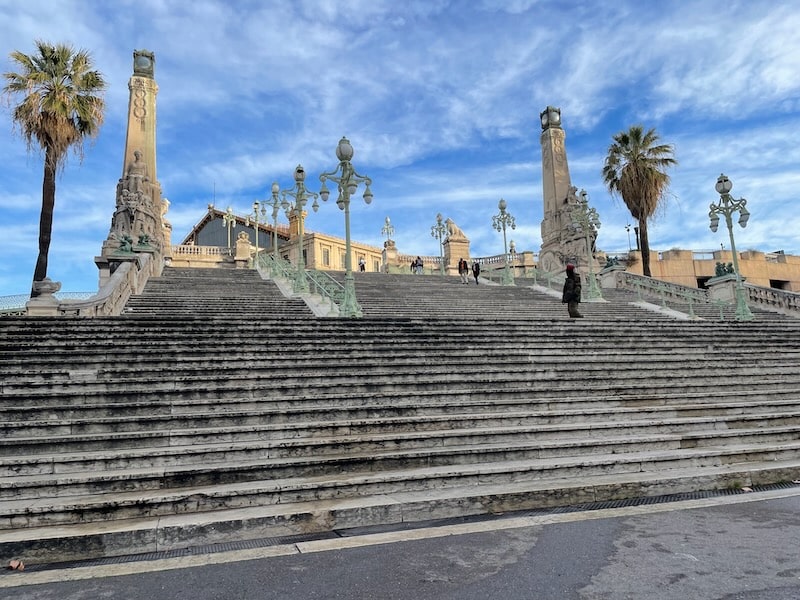 The monumental stairway of Saint-Charles train station
The monumental stairway of Saint-Charles train stationBy plane
You’ll land at Marseille Provence airport, some 25 km/15 mi from the Old Port of Marseille. You’ll have several options to get into town.
- The Marseille airport shuttle bus, called Navette Marseille Aéroport, connects you to Saint-Charles train station in less than half an hour. It’s free if you’ve bought the Marseille City Pass.
- A free shuttle can take you to the nearby Vitrolles Aeroport train station, where you can hop the train to Saint-Charles, although I hardly see the point when you can take the Navette, which is much more frequent.
- Taxis are right at the door of the Arrivals, a better bet if there are several of you with luggage.
- You can also avoid all headaches and arrange for a private transfer pickup from the airport, which can be cost effective if there are several of you.
- There are car rental agencies at the airport, but please, only rent a car if you plan on visiting areas outside Marseille. The last thing you want in the city is a car, with its expensive parking garages, erratic driving and heavy traffic.
By car
As I explain further below, having a car in Marseille is probably more of a hindrance than a help, because of traffic, of course, but also because of a style of driving that can be hectic and “more energetic” than in other parts of France.
If you do come by car, I suggest you either get a hotel with parking and leave your car there for the duration, or use a long-term parking lot and pick up your car when you leave.
By cruise ship
Marseille is a major port, and a popular cruise stop where ships stop for a day while passengers go ashore.
Public transportation in Marseille
Much of the city’s public transport is integrated, which means the city has a one-ticket-serves-all system that is valid for the subway, tram, bus, ferry boat, navette maritime and local trains to nearby villages. (More on each of these below.)
You can buy most tickets from the ticket machines (they take cash or smart cards) in every subway station or at tram stops, or at tobacco stores, or at the transport company’s ticket offices. The two most convenient offices are in the Metro at Saint-Charles train station or the Bourse, behind the Tourist Office, at 6 rue des Fabres.
There are several types of ticket (you can check the latest prices on their website, only in French):
- Solo (individual) good for a single ride - prices are higher if you buy this from the driver
- Combination tickets for 2 rides, 10 rides, or a group of four people
- A 24hr or 72hr pass for unlimited travel
- A 7-day pass, but you’ll need a card with photo ID, which you can get from one of the ticket offices
- The City Pass, which is separate, can also include public transportation (you can get a one-day pass, two days or three days)
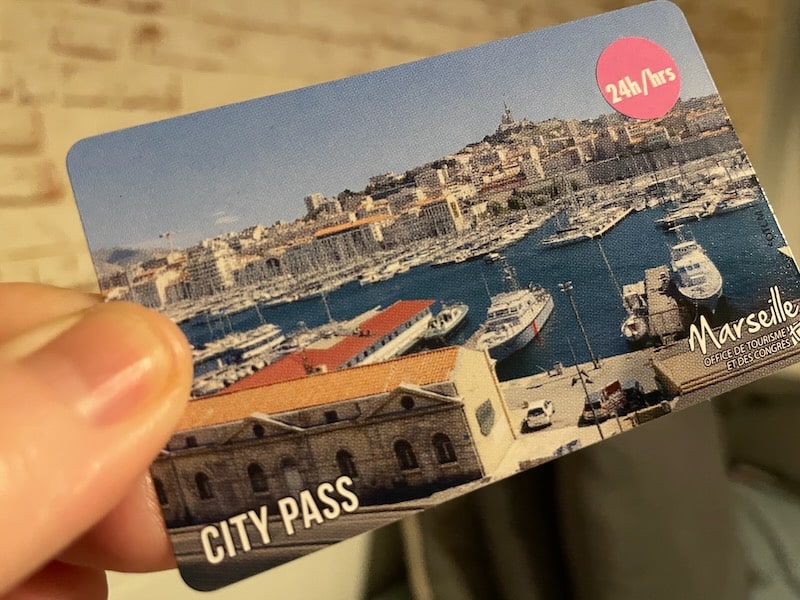
A regular ticket is valid for an hour on all included transportation, but remember to validate it each time you change vehicle. Marseille has added inspectors to its staff and they’re very active. You’ll get fined if your ticket hasn’t been validated.
To validate, just swipe your ticket on the machine as you enter (from the front). If the machine at the entrance doesn’t work, there’s usuall a second one nearby once you’ve gone past the driver.
Public transport is your best option for getting around Marseille. It is frequent, goes pretty much everywhere you’ll want to go, and isn’t too crowded outside rush hour.
Unfortunately, there are times when transport doesn’t run as it should - during strikes, or when there aren’t enough drivers, or for some unexplained reason which isn’t announced anywhere. It’s best to always have a Plan B!
Marseille public transport options
Here are the various forms of public transportation in Marseille and what you can expect from each of them.
Metro system
The subway system, the Métro, consists of two metro lines, M1 and M2, both of them relatively short, but if you're on it's route, the Marseille metro may be the best mode of transport.
- Line M1, marked in blue, runs east to west, connecting La Rose to La Fourragère.
- Line M2, marked in red, connects north to south, from Bougainville to Sainte-Marguerite Dromel.
- Both lines intersect at the metro stations of Gare St. Charles and at Castellane.
You’ll probably find that subway lines take you to most places you’ll want to visit.
Bus system
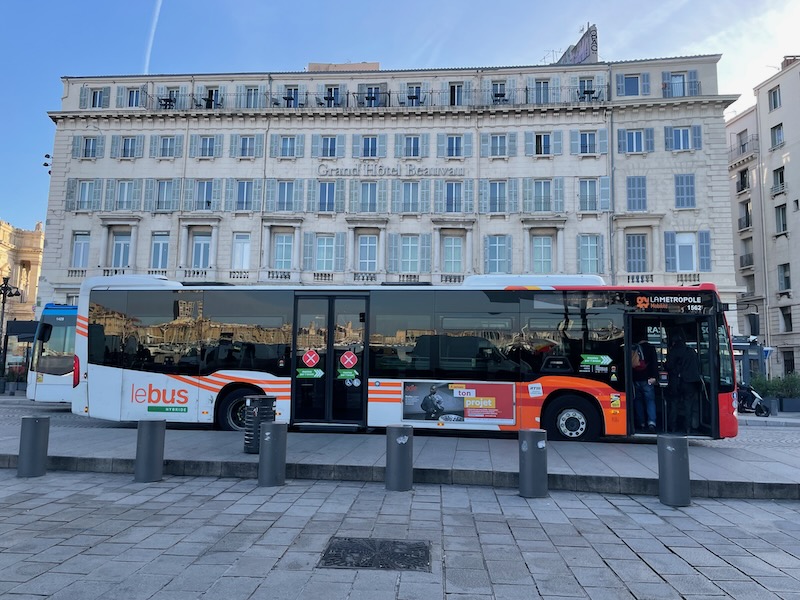
The Marseille bus system is far more extensive than the subway and goes into the suburbs. Bus lines let you visit some of the Marseille beaches but beware, buses can get extremely crowded and may even refuse to stop if they’re overloaded.
For example, if you head out to the beaches in the morning and plan to return in the afternoon, you may find it impossible to get on a bus, so plan accordingly. Go earlier in the morning and return by mid-afternoon.
The city is working to make its public transport sustainable and has a partial fleet of electric buses – you’ll recognize them because they are green.
Tram system
There are three tram lines - T1, T2 and T3. They’re modern and quick and a pleasure to ride, but don’t try to sit. Whoever designed the seats was surely trying to keep people standing, as it is impossible to sit comfortably. Trust me, you’ll be standing up in no time. That said, tram routes are practical and fast.
Navette maritime
This is a water bus, running north and south along the Marseille coast between April and September only. One line runs between the Old Port and Pointe Rouge, while the other goes from the Old Port to L’Estaque.
It’s not as reliable as land transport, however. Being a boat, it is dependent on the weather and can be cancelled at a moment’s notice. It’s part of the city’s public transport system and uses the same ticket scheme.
Ferry boat
At 283m/930ft and under five minutes to cross between the north and south shores of the harbor, this is probably the shortest ferry ride in the world.
The ferry boat – pronounced ferry-BWAT – replaces the transporter bridge that once joined the shores.
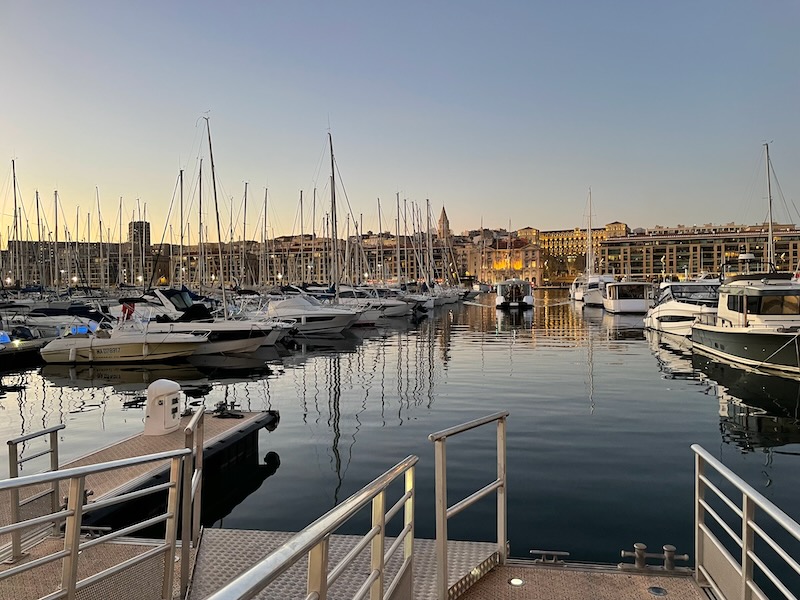 You can see the ferry boat approaching from the other shore
You can see the ferry boat approaching from the other shoreThis metallic bridge operated in the Old Port in the earlier part of the 20th century but was abandoned in the 1930s when money couldn’t be found for maintenance. It was bombed by the Nazis in 1944 but parts remained standing until everything was brought down in 1945.
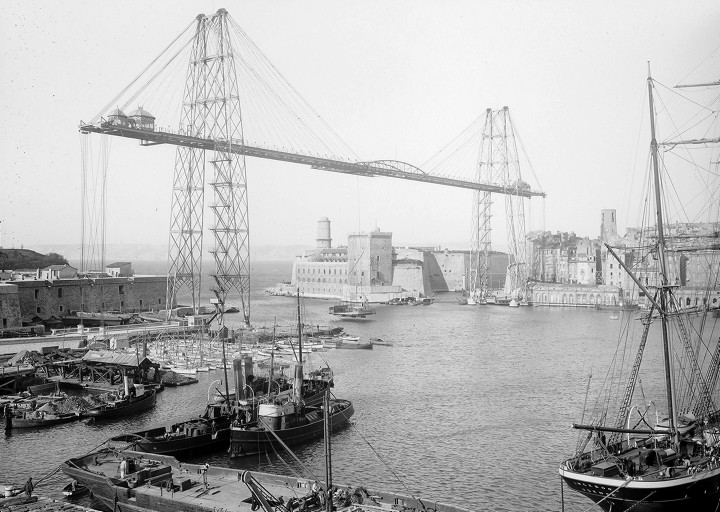
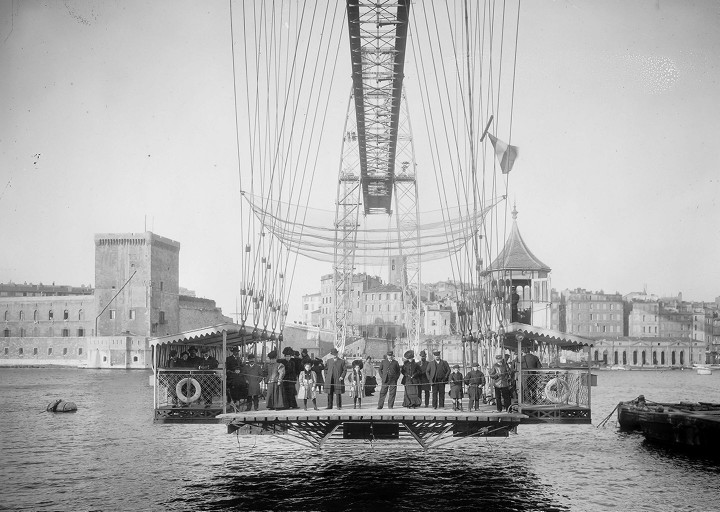 Crossing Marseille Old Port via the transporter bridge which connected the two sides of the port from 1905-1944. It stopped being used in the 1930s because there were no funds for upkeep
Crossing Marseille Old Port via the transporter bridge which connected the two sides of the port from 1905-1944. It stopped being used in the 1930s because there were no funds for upkeepOther ways of getting around Marseille
Beyond the standard public transport, there are plenty of other types of Marseille transportation. Here they are.
Cycling
As more areas in central Marseille become pedestrianized and the city increases its commitment to sustainable transport, cycling is becoming a good option, as are electric scooters. There are a number of bike lanes, but their use is a bit eclectic - people walk along them, while bicycles zoom across the sidewalks. Still, it’s a form of transport that’s gaining ground.
As a visitor you probably won’t have your own bike, but there is a bike-sharing scheme called Le Vélo, with stations throughout town for pick-up or drop-off. Remember that Marseille is a very hilly city and only suitable for cycling if you’re in shape. You can get a daily or weekly subscription card here for Le Vélo.
The one area perfect for cycling is along the Corniche Kennedy, the winding road that follows the coast towards the south – and which is lined by a bike path. You can do this on your own, or on a guided tour if you’d prefer.
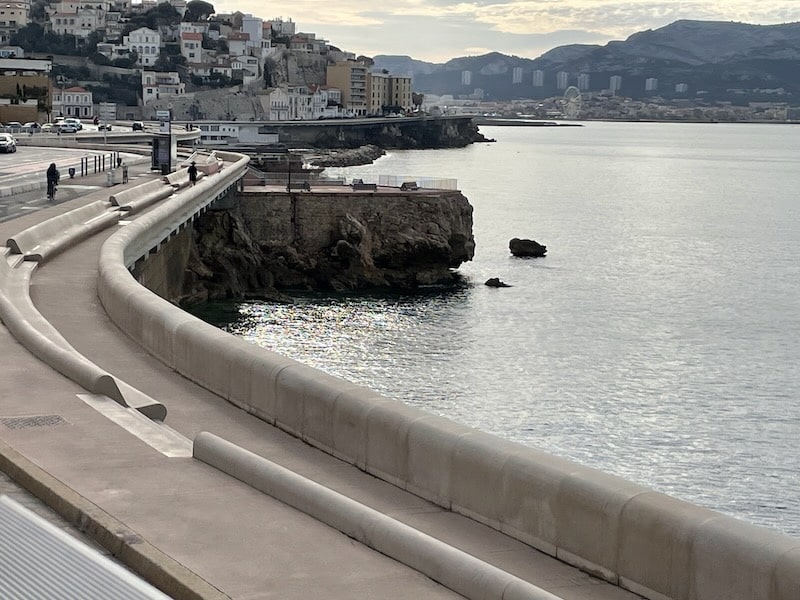 The Corniche, stretching southward from Marseille
The Corniche, stretching southward from MarseilleTaxis
There are plenty of taxis in Marseille, but you’ll have to go to a taxi station or phone for one.
It’s not particularly expensive, and will work well if there isn’t too much traffic. Remember that the old quarter of Le Panier, on the hill above the Old Port, is more than half pedestrian, with narrow streets, so if you’re staying up there, there’s every chance your taxi won’t be able to take you to your door.
Here is an interactive map of taxi stations in Marseille.
Uber or Bolt
They exist. I haven’t used them but I checked my apps once in a while and did find several around so if you can’t call a taxi or get to a station, this is a great alternative.
Hop-on hop-off bus
As in many cities, the hop on hop off Marseille bus – known as Colorbüs – does a circuit of the city, with stops at the main attractions. Your whole-day ticket lets you get on and off at different stops throughout the day.
I enjoy taking these buses when I have little time in a city; they help orient me, I get to see a couple of the best attractions, and I know where to return the next day on my own.
You can get your bus ticket here.
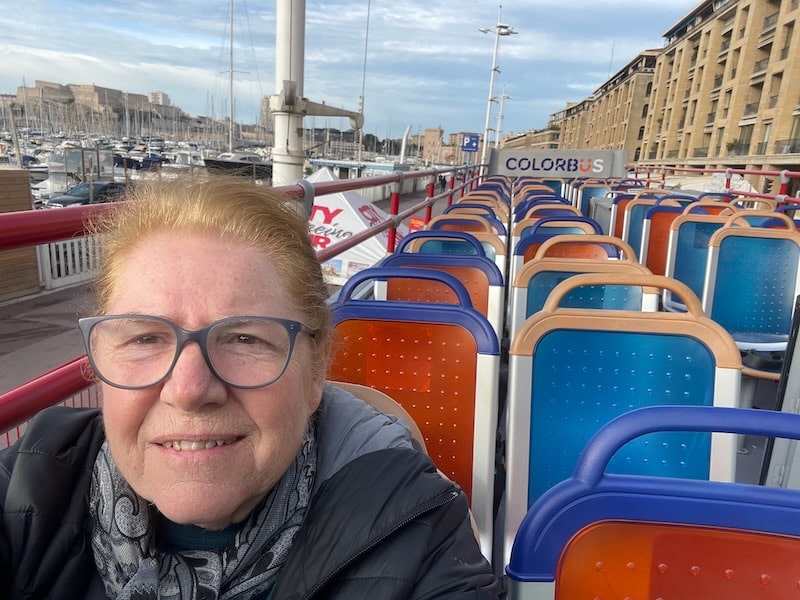 Yours truly, braving the winter wind alone on the uncovered roof of the hop-on hop-off bus
Yours truly, braving the winter wind alone on the uncovered roof of the hop-on hop-off busLe Petit Train
This is a cute little tourist train and a favorite of children and families. It toodles through the city and you can catch it on the north side of the harbor, two-thirds of the way down (just like the hop-on hop-off bus).
Car
I mention this because some of you may decide to brave the traffic and enter Marseille by car, which I do not recommend.
You won’t really be able to get around to the main attractions, which are increasingly being closed off to regular traffic, so you’ll have to pay for expensive private parking. Parking on the street is not a solution, as you’ll see when you get there. The Marseillais park pretty much anywhere (although fines are more common now) and haphazardly.
It’s really much more of a headache than you need.
If you do decide to drive into the city, at least stay in a hotel with parking (or at least with parking nearby). You can then leave your car there for the duration of your stay. Here are a few recommendations around the Old Port:
And here’s a list of hotels in Marseille in all neighborhoods that have announced they have parking.
TIPS FOR RENTING A CAR IN MARSEILLE
- Try to start your journey far from the center, from the airport, for example, to avoid the worst of the traffic and confusion.
- Check availability of car rentals and compare prices of different agencies here.
- Remember, most cars in France are manual transmission, and not all agencies have automatics. When you search for a car, make sure you tick the “automatic transmission” box in the left column. While automatics used to be way more expensive than manuals, this is no longer always the case. On rare occasions, they might be cheaper! Always check.
Walking
Let’s not forget our own two feet!
This is in fact my favorite type of transport in Marseille, which I liberally combine with the public transportation system. Although the city is large, most attractions are within a small walkable core.
The harbor is stunning and always interesting, with masts bobbing within reach and a clutch of islands floating nearby. In the morning, take in the city’s markets. Later, when the sun is gentlest, you can sip your evening drink at a sidewalk café, with the sea next door.
Walking will put you in closer touch with the city, but make sure you look down often. Streets and sidewalks are uneven (and definitely not accessible in the old part of town) and many dogs do their business with impunity, their owners carefree in the knowledge that if they look up at the sky, no one will notice they’re not picking up.
If the bus strands you on the Corniche, know that you’ll be able to walk back (if you’re not too far away). The traffic is noisy, but the panoramic views of the Mediterranean are worth it. And if you’re filled with courage, you can walk all the way up to Notre-Dame-de-la-Garde Basilica for some of the best vistas over Marseille.
Transport tips for Marseille
- Arm yourself with patience. And carry some reading material in case you have to wait for a bus or two.
- Make sure you either have a paper map or a digital one. Marseille is actually quite easy to get around, but one wrong metro stop and you’ll need to know your way back.
- If it’s summer, a bottle of water isn’t a bad idea to ward off the heat.
- If you’re planning to travel beyond Marseille by train, please make sure you get your tickets ahead of time or you may be fined. You can get them here.
Day trips from Marseille
If you're spending more than one day in Marseille, you should seriously be thinking of exploring some of its nearby beauty.
There are plenty of wonderful day trips you can take from Marseille by car, train, or on guided excursions. Some will take a couple of hours, while others can fill up your entire day.
Chateau d’If
This is the easiest and most essential of visits from Marseille. Often called the Monte Cristo Prison – after the famous fictional character imprisoned here for 14 years in the Count of Monte Cristo novel by Alexandre Dumas – it is an easy boat trip from Marseille.
Both the boat ride and the entrance are included in your City Pass, or you can simply get on a boat yourself and head out. Try to do this early, before 10am, to avoid the worst of the crowds.
Here’s everything you need to know about the Chateau d’If.
The Frioul Islands
The Chateau d’If is actually part of the Frioul Archipelago, and you can expand your day at the chateau with a stop on the islands (just make sure your ticket combines the two) or you can go directly to the islands without visiting the chateau. Both the fortress and the Frioul islands are part of the Calanques National Park.
Spend a half-day sailing in the islands, a perfect activity on a hot summer day if you want to indulge in some swimming far from the crowds. This is also a land of dazzling sunsets, best seen on a sunset cruise from the water.
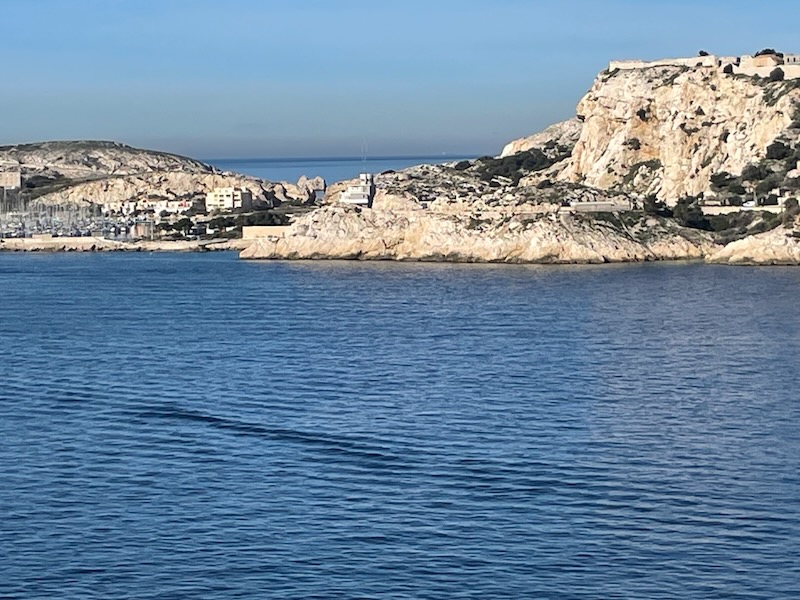 The Frioul Islands
The Frioul IslandsCassis
This is a charming seaside port and a great jumping off point for a hike or sail along the Calenques National Park, that glorious collection of sparkling blue inlets just south of Marseille.
Both trains and buses go to Cassis from Marseille, but be aware that the train leaves you far from the port and you’ll have to take an extra bus. Check with the Tourist Office for the latest schedules.
Aix-en-Provence
This is a delightful provençal city and easily reachable by train in 45 minutes, with trains leaving every half-hour or so.
If you’re short on time and want to make the most of your day, this tour takes you to both Aix-en-Provence and Cassis so you’ll see it all.
The Luberon
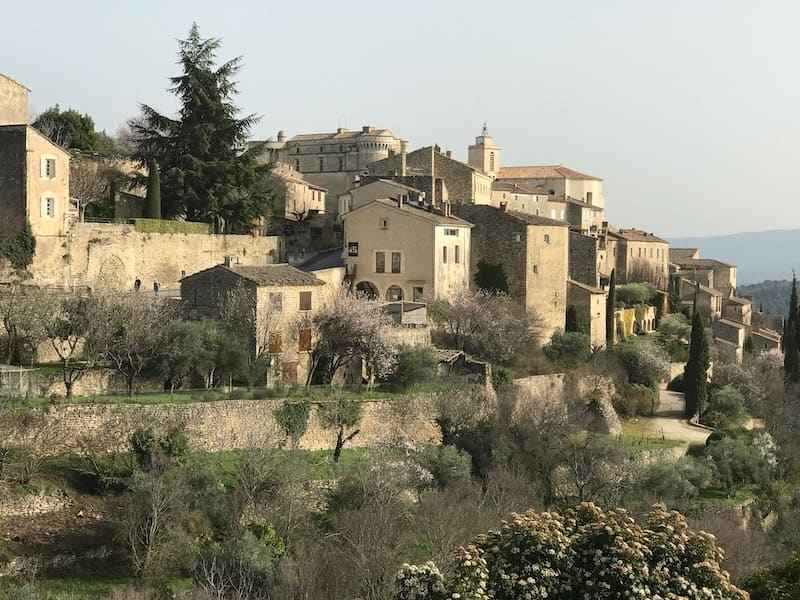 The glorious Luberon, a fabulous day trip from Marseille
The glorious Luberon, a fabulous day trip from MarseilleThis is one of my favorite corners of France, home of perched hilltop villages made famous by Peter Mayle’s series of books on Provence, among others. If you’re here in June, you’ll be blessed with lavender season but even without it, you’ll find it hard to beat this area for sheer beauty.
This tour will take you to the Lavender fields, and this one combines a village and… wine.
For the full Luberon villages experience, spend the day hopping from village to village.
If you plan to tour around, here are my favorite five villages in the Luberon.
Avignon
If you haven’t visited the city of Avignon yet, this is your chance. Its Papal Palace is protected by UNESCO’s World Heritage List, and its famous bridge, the Pont d’Avignon, is probably the best-known bridge in France (and the topic of our most famous children’s song).
Getting from Marseille to Avignon is a cinch, again on the train. It takes between one and two hours, depending on which station you go to. Avignon has two: Avignon TGV, a bit out of town, but you can grab a shuttle to go into town easily, and Avignon Centre, the longer ride, which takes you straight into town. With 50 trains a day, you’ll have plenty of choice.
Some people prefer the faster ride and the transfer. I prefer the slower ride and delivery straight into town.
Before you go...
Marseille is not a difficult city to get around, and most things you want to see and do are within walking distance, with a few exceptions, so you can get 80% of your sightseeing done without any transportation at all.
Did you enjoy this article? I'd love if you shared it!

